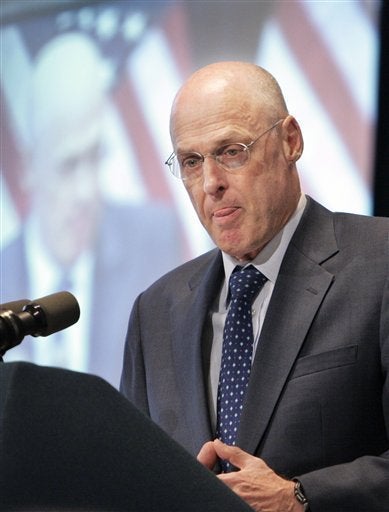
Treasury Secretary Henry Paulson made some disastrous decisions that had major unintended consequences.
One of those was the decision to nationalize Fannie Mae and Freddie Mac. Once the government took over Fannie Mae and Freddie Mac, supposedly preemptively, shareholders of every other financial company that perhaps needed capital were left with no choice but to sell aggressively, fearing the government might decide to preemptively wipe them out also. This made it impossible for any company to raise the capital it needed or wanted.
About a week later Lehman Brothers filed for bankruptcy, Merrill Lynch was forced to sell to Bank of America, and AIG was extended a huge government loan, all completely or nearly wiping out shareholders.
Then Paulson forced nine major banks to receive capital infusions from treasury, effectively partly nationalizing them, and creating a huge American Sovereign Wealth fund.
The above referenced nationalizations created a bizarre situation where the government contended that financial institutions needed more capital, and that it should be private capital that will solve the problem. But the government also indicated that it stands ready to provide additional assistance in the future, thus destroying the equity stakes of those prospective capital providers. Why would private capital invest, if it believes it is the policy of the government to later intervene and dilute it?
Enter the pernicious crash of October-November 2008.
The smartest CEO, John Thain of Merrill, understood the new landscape before anyone else and quickly sold at the then still available price, albeit a fraction of his company's value at its peak. In doing that he saved Merrill from the ignominious fate it was inevitably headed towards, the same fate that awaited Lehman Brothers.
And by letting Lehman Fail, the counterparty risk was unleashed on the economy of the world, as Lehman was involved in thousands of trades all over the globe and was much bigger than Bear Stearns. That brought to the forefront the systemic risk that is now looming above us like a dark cloud. All of a sudden even money market funds were losing principal. Secured bond holders are losing money (unlike the creditors of Bear Stearns, Fannie and Freddie, who emerged whole). Nobody knew who could be trusted, and short term credit markets ceased to function, severely impairing the economy further.
I believe Secretary Paulson's policies aggravated the crisis. At the moment, Citigroup and JP Morgan are struggling; locked out of the market for private capital and their shares are in free fall. Despite major capital infusions, most financial stocks are down sharply. The nine institutions that received the first cash infusion from Washington have seen their shares fall more than 40% since then. Goldman Sachs last week was trading at a value less than just the amount of money it raised recently. So many financial institutions are failing, making the federal government their built-in savior and enervating the Fed's resources with their insatiable demand for fresh cash.
All this is making it palpably clear that the Treasury's policy did nothing to build confidence or stabilize the markets. The sickening, precipitous drop of the equity markets in October and November are the market's judgment on the merit of Treasury's policies.
Alan Schram is the Managing Partner of Wellcap Partners, a Los Angeles based investment firm.